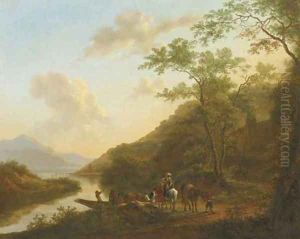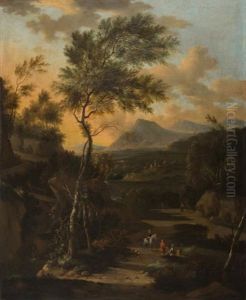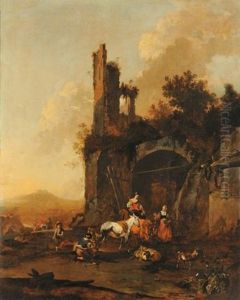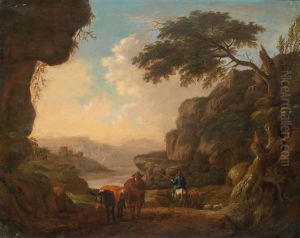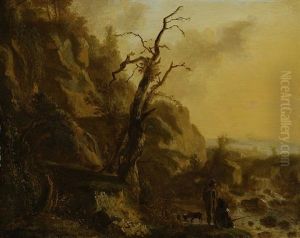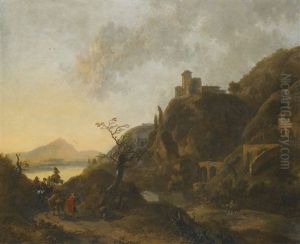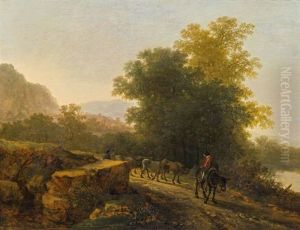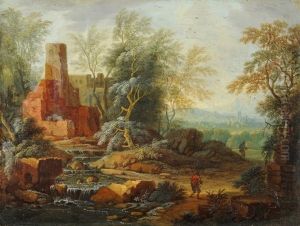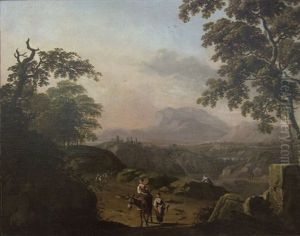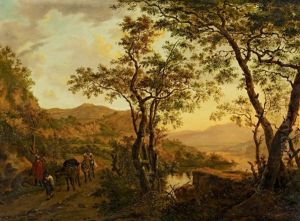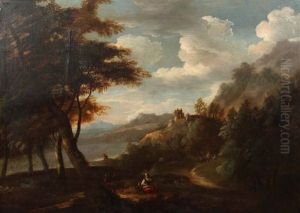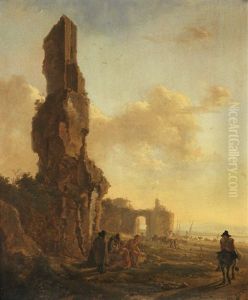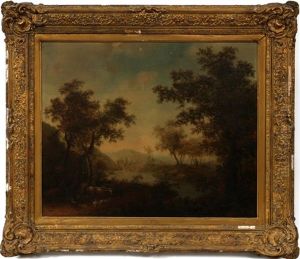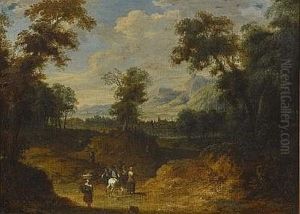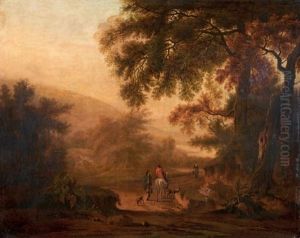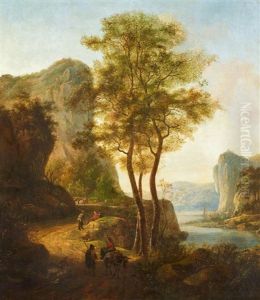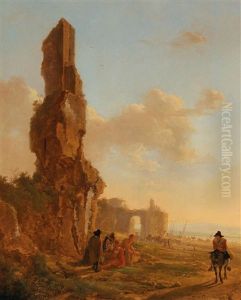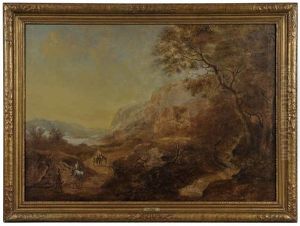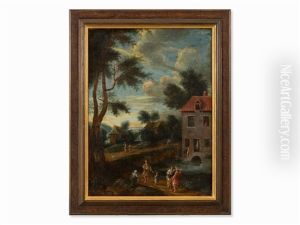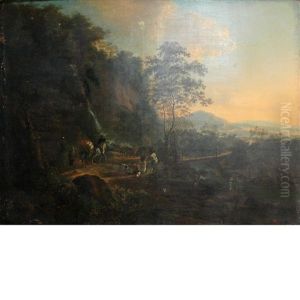Jan Dirksz. Both Paintings
Jan Dirksz Both was a Dutch painter and etcher, known primarily for his landscapes. He was born around 1618 in Utrecht, which was then part of the Dutch Republic. Jan was one of two sons of the painter Dirck Both, and his brother Andries Both was also a painter. The brothers were taught by their father and later became students of the prominent landscape painter Abraham Bloemaert.
Jan Both is especially noted for his work in the Italianate style of landscape painting. After his initial training in Utrecht, he, along with his brother Andries, traveled to Rome sometime around 1638. There, he was influenced by the work of Claude Lorrain and other landscape painters who were incorporating classical and idealized elements into their depictions of the Roman countryside. This Roman sojourn was pivotal for Both; he absorbed the warm light and atmosphere of the Italian landscape, which would become characteristic of his style.
Both's work often features scenes with ruins and figures, bathed in a golden, natural light, with a masterful rendering of the atmosphere, which gives his paintings a sense of depth and realism. His landscapes had a significant impact on the development of Dutch landscape painting, and he contributed to the dissemination of the Italianate style in the Northern Netherlands.
Jan Both returned to Utrecht around 1641, where he became a successful painter, influencing the next generation of Dutch Italianate landscape painters. His works were highly sought after, not only in the Dutch Republic but also across Europe, as his paintings were collected by patrons who appreciated the blend of Dutch precision and Italianate warmth.
Unfortunately, Both's career was cut short when he died in a drowning accident in 1652, near Venice according to some sources, though this is not definitively confirmed. His death marked the loss of one of the leading landscape artists of his generation. Today, Both's paintings can be found in major museums around the world, and he is remembered for his role in shaping the Dutch landscape painting tradition and bridging the gap between Dutch and Italian art of the 17th century.
